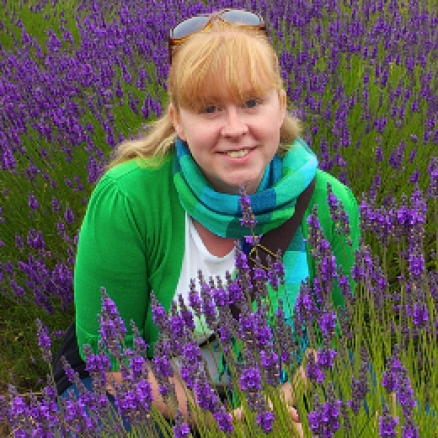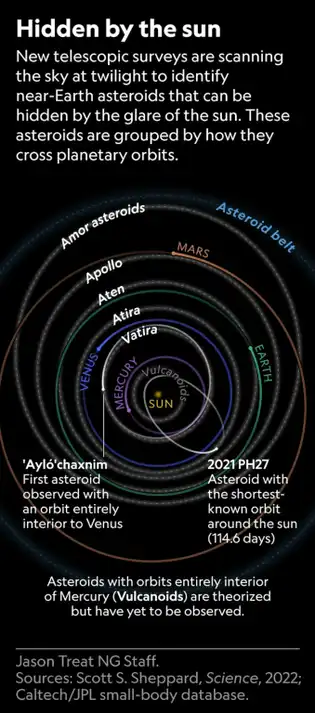Some rare asteroids are only visible to telescopes during the few short hours during morning and evening twilight, making them notoriously difficult to discover.

In her leadership role within the LSST’s Solar System Science Collaboration, Sarah Greenstreet has led recent efforts to ensure that LSST uses a portion of the survey to search the twilight near-Sun sky for these elusive asteroids. This would give LSST the potential to vastly increase the number of known asteroids in the near-Sun population, allowing us to study these objects on both a deeper and broader level than ever before.
In July 2022, Sarah Greenstreet’s research over the past decade on the population of asteroids that live very close to the Sun was featured in a National Geographic article that highlighted her current research, including an article Sarah wrote for Physics Today last year.
Here we bring a short excerpt; read full article in the National Geographic.

…
“Spotted in early 2020, ꞌAylóꞌchaxnim is just shy of a mile wide—big enough to pack a painful punch if it ever smashes into a planet. Which, astronomers say, it probably will.
“It’s most likely going to hit Venus in the future,” says the University of Washington’s Sarah Greenstreet, who modelled a future for ꞌAylóꞌchaxnim as part of her studies of the origins and fates of these inner asteroids.
According to Greenstreet’s models, as well as others, the most likely scenario is for ꞌAylóꞌchaxnim to get tangled up with Venus sometime in the next several million years. As it zips around the sun, the rocky body is being jiggled by the gravity of Mercury and by sunlight itself, both of which can perturb its orbit, gently pushing it outward and onto a collision course with Earth’s hellish sister world.”
….
Read full article in the National Geographic.